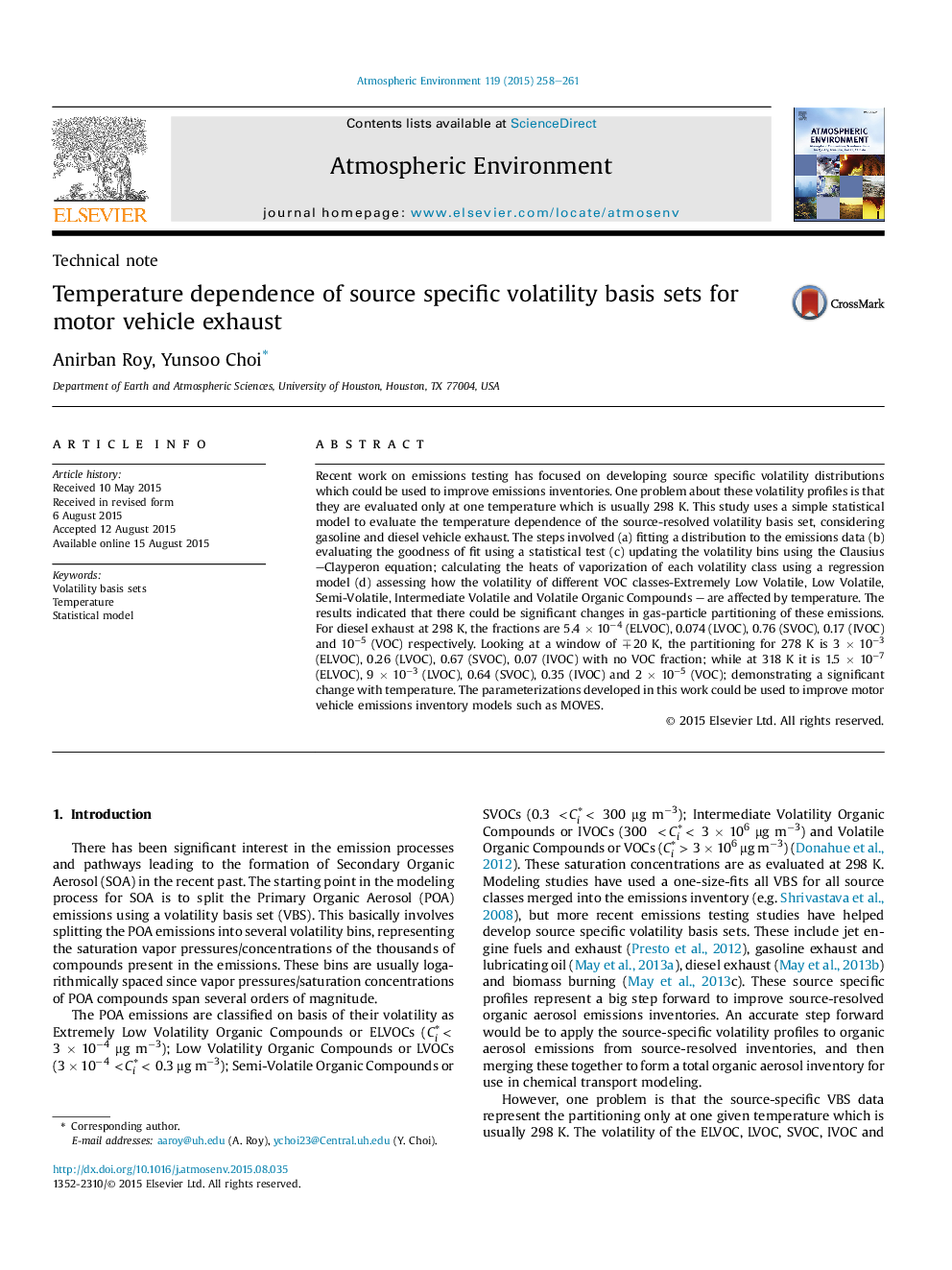| Article ID | Journal | Published Year | Pages | File Type |
|---|---|---|---|---|
| 6337707 | Atmospheric Environment | 2015 | 4 Pages |
Abstract
Recent work on emissions testing has focused on developing source specific volatility distributions which could be used to improve emissions inventories. One problem about these volatility profiles is that they are evaluated only at one temperature which is usually 298Â K. This study uses a simple statistical model to evaluate the temperature dependence of the source-resolved volatility basis set, considering gasoline and diesel vehicle exhaust. The steps involved (a) fitting a distribution to the emissions data (b) evaluating the goodness of fit using a statistical test (c) updating the volatility bins using the Clausius-Clayperon equation; calculating the heats of vaporization of each volatility class using a regression model (d) assessing how the volatility of different VOC classes-Extremely Low Volatile, Low Volatile, Semi-Volatile, Intermediate Volatile and Volatile Organic Compounds - are affected by temperature. The results indicated that there could be significant changes in gas-particle partitioning of these emissions. For diesel exhaust at 298Â K, the fractions are 5.4Â ÃÂ 10â4 (ELVOC), 0.074 (LVOC), 0.76 (SVOC), 0.17 (IVOC) and 10â5 (VOC) respectively. Looking at a window of â20Â K, the partitioning for 278Â K is 3Â ÃÂ 10â3 (ELVOC), 0.26 (LVOC), 0.67 (SVOC), 0.07 (IVOC) with no VOC fraction; while at 318Â K it is 1.5Â ÃÂ 10â7 (ELVOC), 9Â ÃÂ 10â3 (LVOC), 0.64 (SVOC), 0.35 (IVOC) and 2Â ÃÂ 10â5 (VOC); demonstrating a significant change with temperature. The parameterizations developed in this work could be used to improve motor vehicle emissions inventory models such as MOVES.
Keywords
Related Topics
Physical Sciences and Engineering
Earth and Planetary Sciences
Atmospheric Science
Authors
Anirban Roy, Yunsoo Choi,
